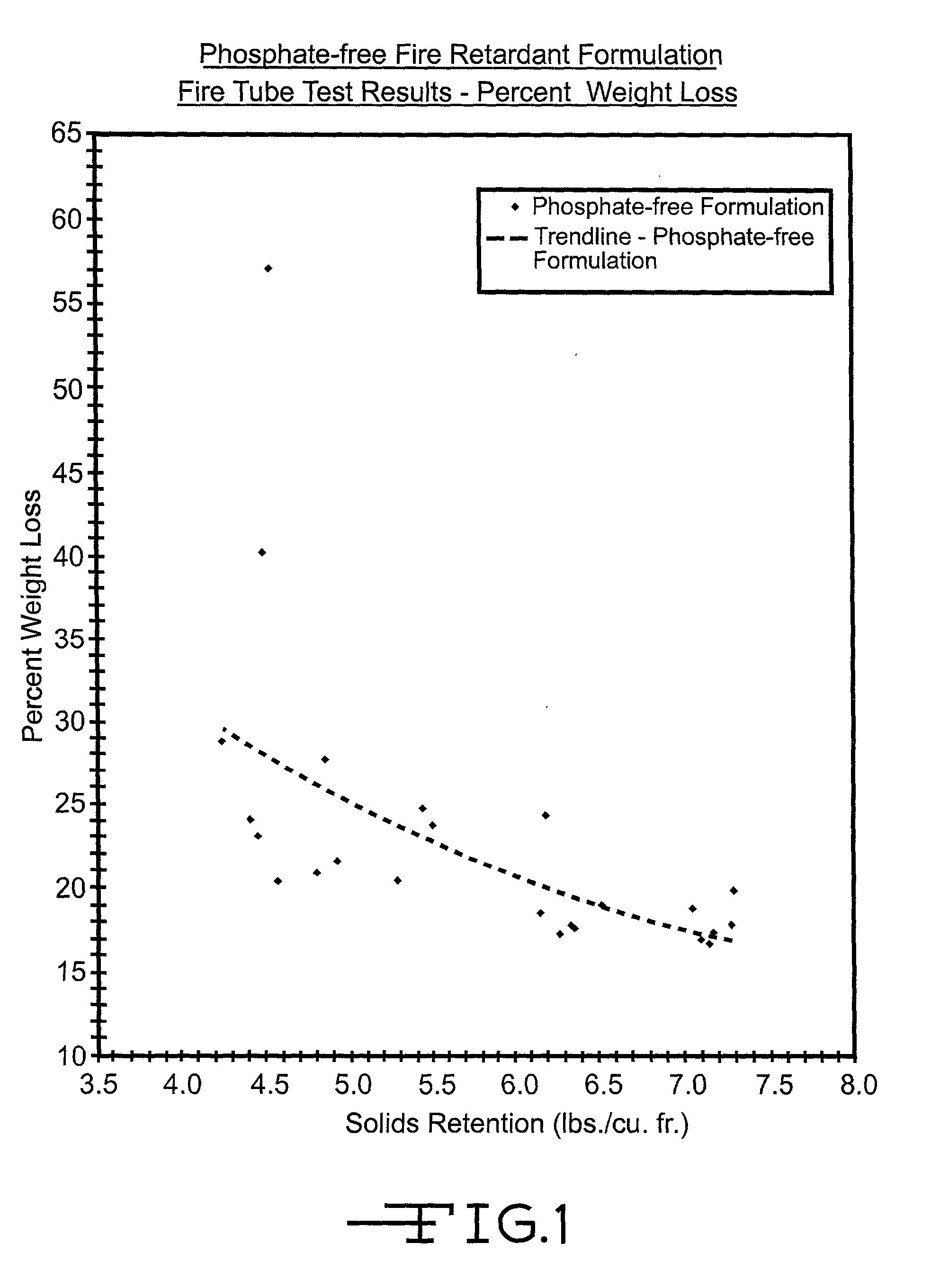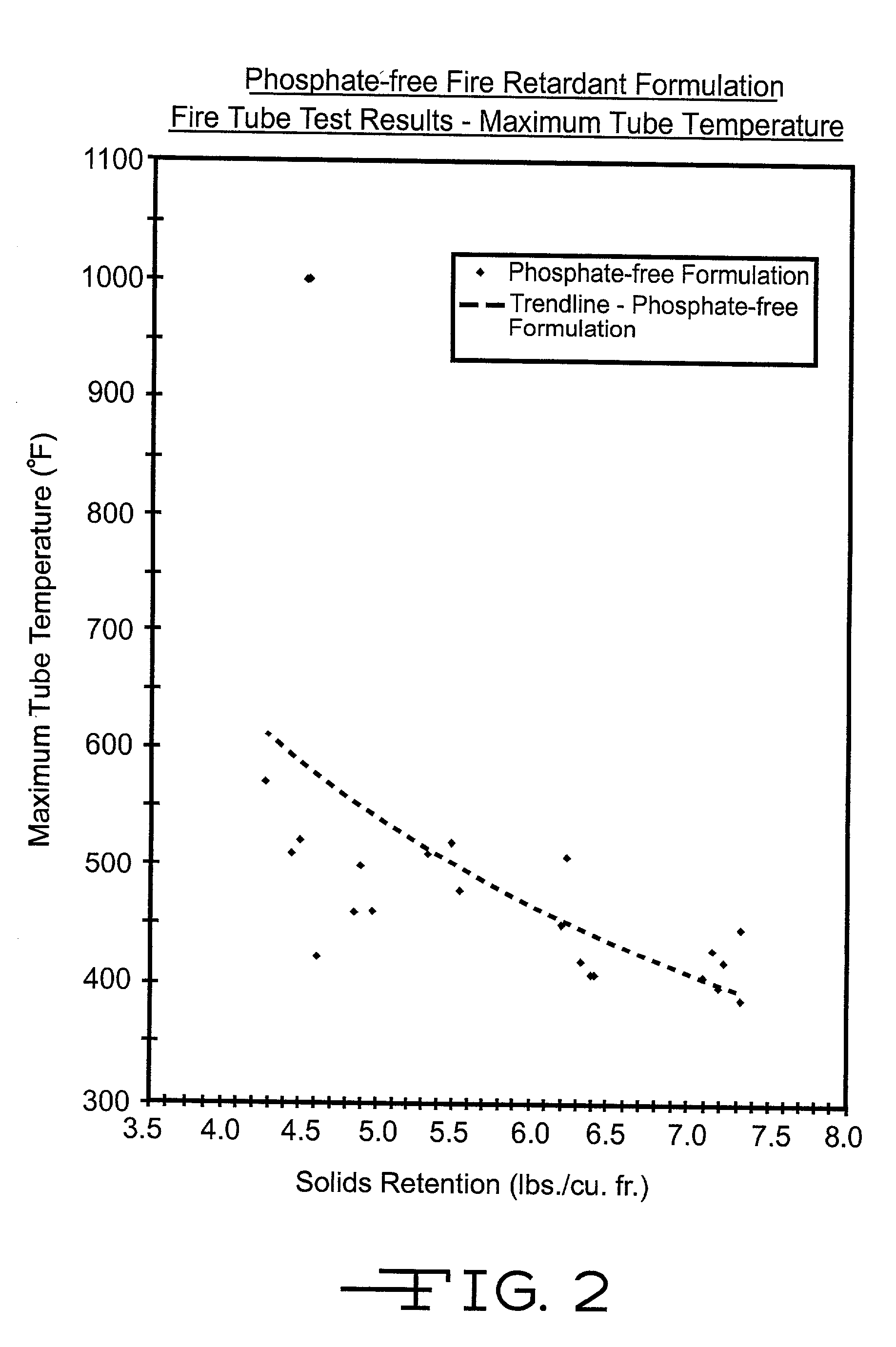Phosphate free fire retardant composition
a fire retardant composition and phosphate technology, applied in antifouling/underwater paints, wood treatment details, coatings, etc., can solve the problems of prior art treated lumber and plywood suffering degradation, roof sheathing and roof truss lumber being observed to suffer thermal degradation, and roofs are typically subject to high temperatures and may also be subject to high humidity levels
- Summary
- Abstract
- Description
- Claims
- Application Information
AI Technical Summary
Benefits of technology
Problems solved by technology
Method used
Image
Examples
example 1
[0062] A 5.0% aqueous fire retardant solution is prepared from 0.85 parts cyanimide, 1.00 part tetraboric acid, 2.25 parts 5 mole sodium tetraborate, 0.90 parts urea and 95.0 parts water. The water is heated to 120.degree. F., while stirring, the cyanimide, 5 mole sodium tetaborate, tetraboric acid and urea are added, and the blend is stirred until all of the components are in solution. The resulting nitrogen:boron ratio is 1.62:1. The solution is then allowed to cool to room temperature.
example 2
[0063] An 8.0% aqueous fire retardant solution is prepared from 0.96 parts dicyandiamide, 4.00 parts 10 mole sodium tetraborate, 1.84 parts metaboric acid, 1.20 parts guanylurea and 92.0 parts water. The water is heated to 120.degree. F. while stirring, the dicyandiamide, 10 mole sodium tetraborate, metaboric acid and guanylurea are added, and the blend is stirred until all of the components are in solution. The resulting nitrogen:boron ratio is 1.45:1. The solution is then allowed to cool to room temperature.
example 3
[0064] A 12.0% aqueous fire retardant solution is prepared from 1.80 parts dicyandiamide, 6.00 parts 10 mole sodium tetraborate, 2.40 parts boric oxide, 1.80 parts guanidine sulfate and 88.0 parts water. The water is heated to 120.degree. F., while stirring, the dicyandiamide, 10 mole sodium tetraborate, boric oxide and guanidine sulfate are added, and the blend is stirred until all of the components are in solution. The resulting nitrogen:boron ratio is 1.36:1. The solution is then allowed to cool to room temperature.
PUM
| Property | Measurement | Unit |
|---|---|---|
| humidity | aaaaa | aaaaa |
| corrosion rates | aaaaa | aaaaa |
| corrosion rates | aaaaa | aaaaa |
Abstract
Description
Claims
Application Information
 Login to View More
Login to View More - R&D
- Intellectual Property
- Life Sciences
- Materials
- Tech Scout
- Unparalleled Data Quality
- Higher Quality Content
- 60% Fewer Hallucinations
Browse by: Latest US Patents, China's latest patents, Technical Efficacy Thesaurus, Application Domain, Technology Topic, Popular Technical Reports.
© 2025 PatSnap. All rights reserved.Legal|Privacy policy|Modern Slavery Act Transparency Statement|Sitemap|About US| Contact US: help@patsnap.com


